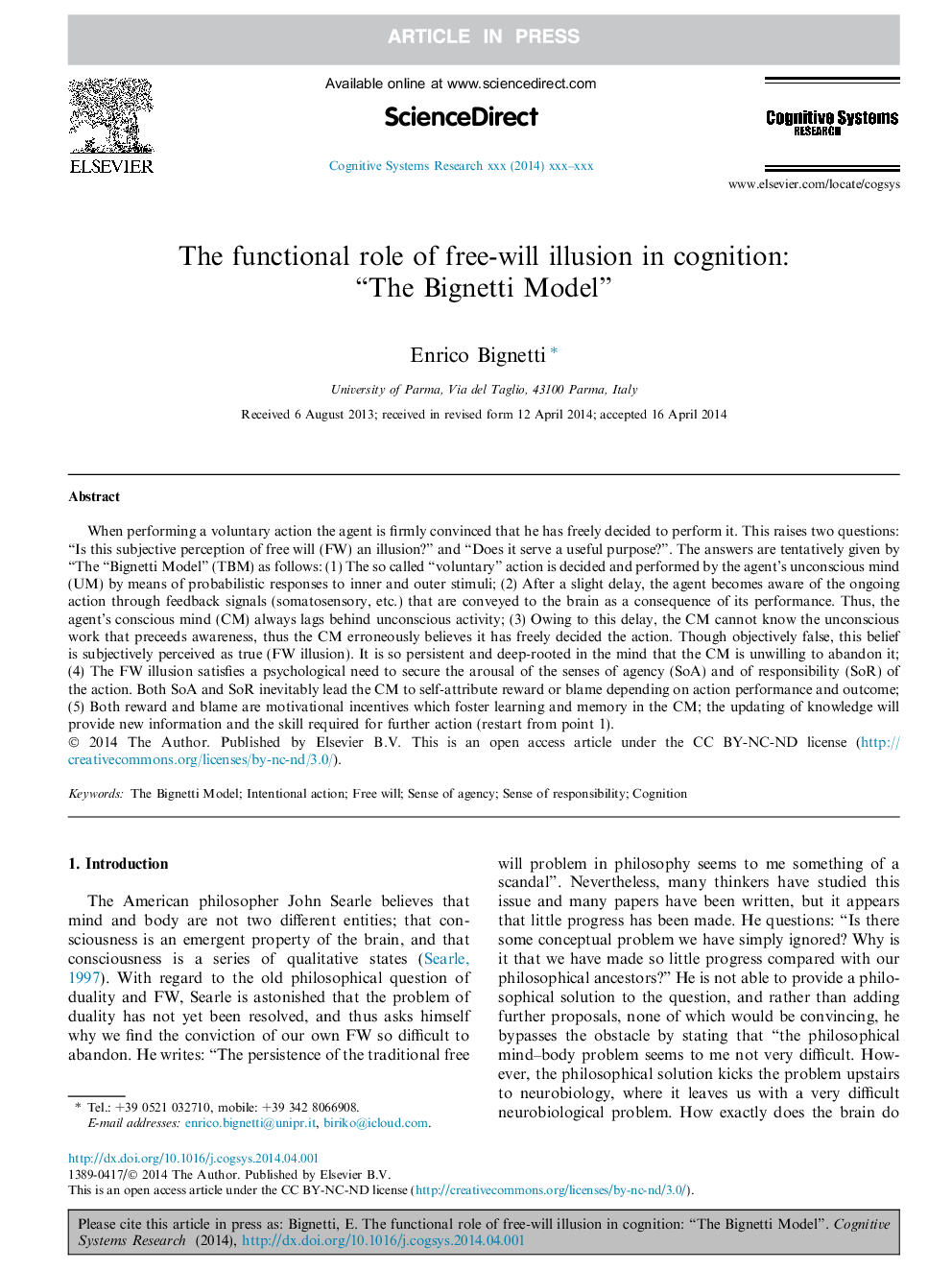| Article ID | Journal | Published Year | Pages | File Type |
|---|---|---|---|---|
| 6853858 | Cognitive Systems Research | 2014 | 16 Pages |
Abstract
When performing a voluntary action the agent is firmly convinced that he has freely decided to perform it. This raises two questions: “Is this subjective perception of free will (FW) an illusion?” and “Does it serve a useful purpose?”. The answers are tentatively given by “The “Bignetti Model” (TBM) as follows: (1) The so called “voluntary” action is decided and performed by the agent's unconscious mind (UM) by means of probabilistic responses to inner and outer stimuli; (2) After a slight delay, the agent becomes aware of the ongoing action through feedback signals (somatosensory, etc.) that are conveyed to the brain as a consequence of its performance. Thus, the agent's conscious mind (CM) always lags behind unconscious activity; (3) Owing to this delay, the CM cannot know the unconscious work that preceeds awareness, thus the CM erroneously believes it has freely decided the action. Though objectively false, this belief is subjectively perceived as true (FW illusion). It is so persistent and deep-rooted in the mind that the CM is unwilling to abandon it; (4) The FW illusion satisfies a psychological need to secure the arousal of the senses of agency (SoA) and of responsibility (SoR) of the action. Both SoA and SoR inevitably lead the CM to self-attribute reward or blame depending on action performance and outcome; (5) Both reward and blame are motivational incentives which foster learning and memory in the CM; the updating of knowledge will provide new information and the skill required for further action (restart from point 1).
Related Topics
Physical Sciences and Engineering
Computer Science
Artificial Intelligence
Authors
Enrico Bignetti,
